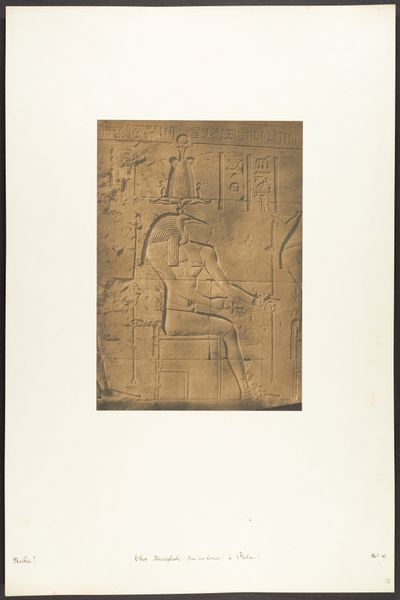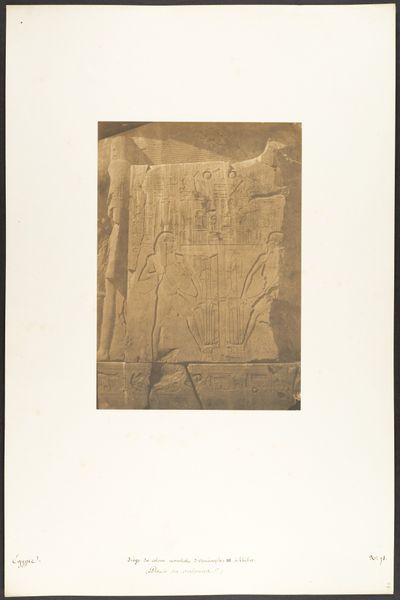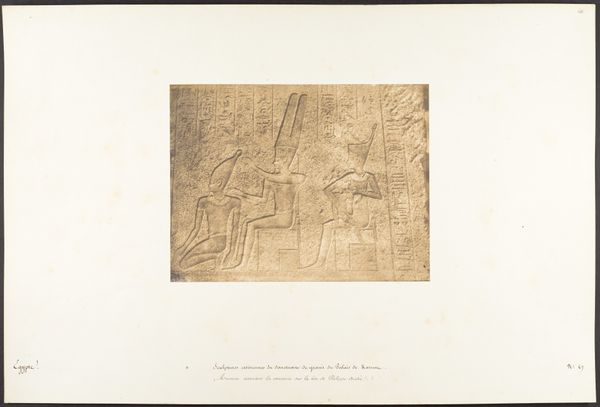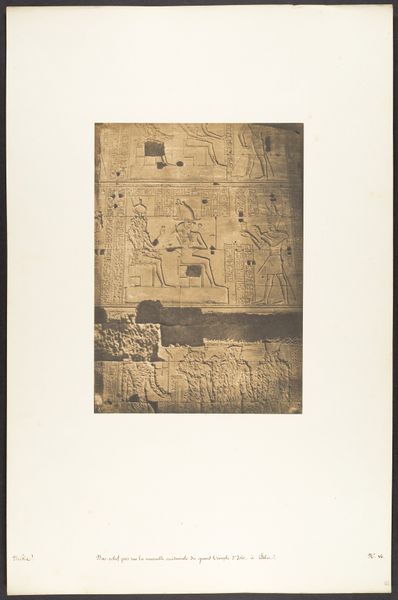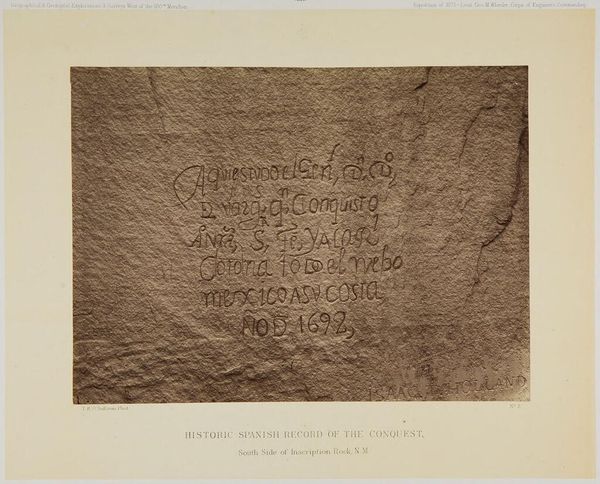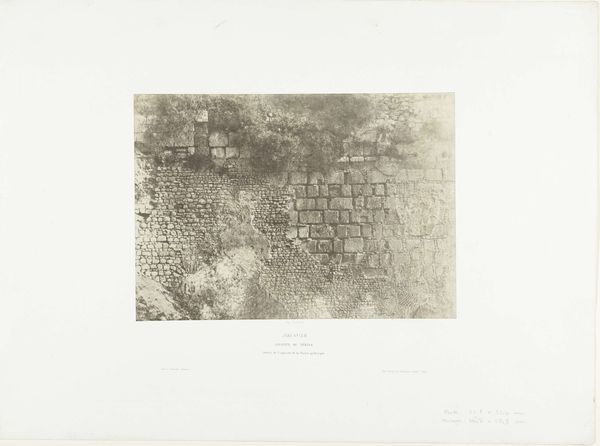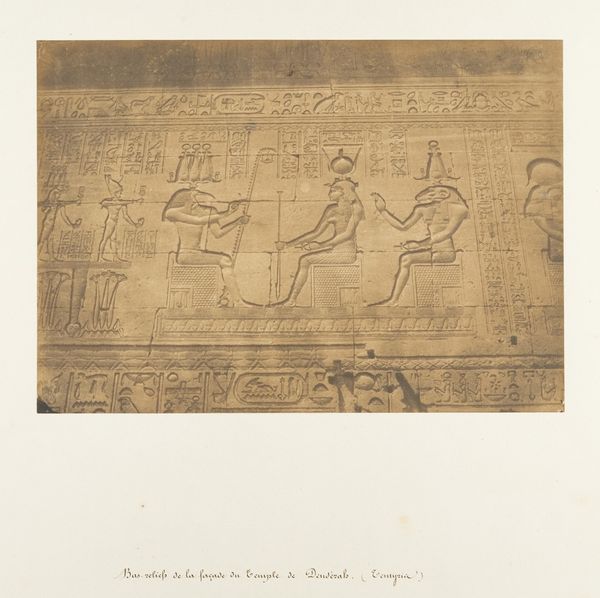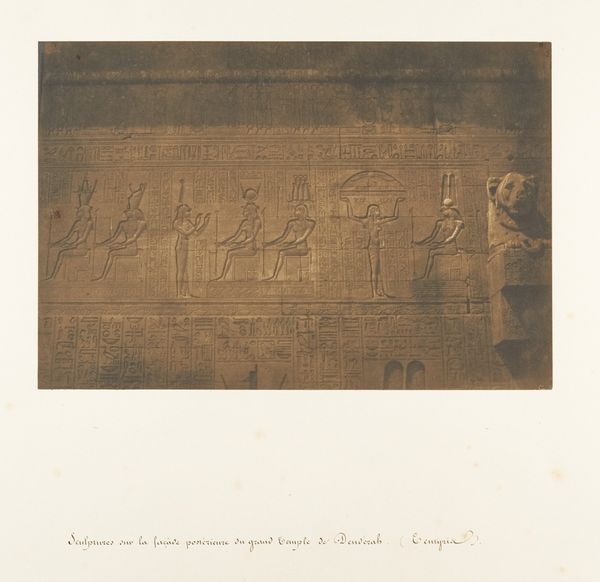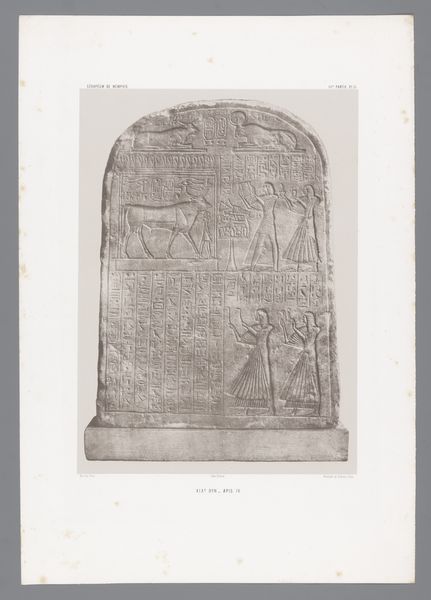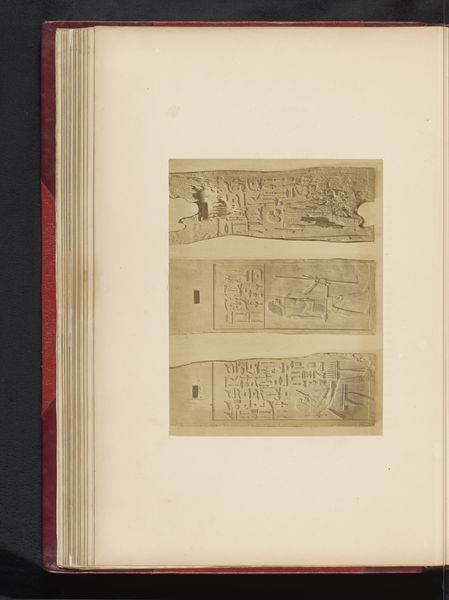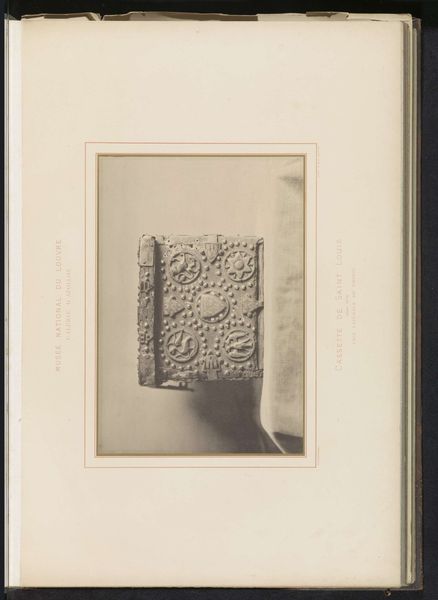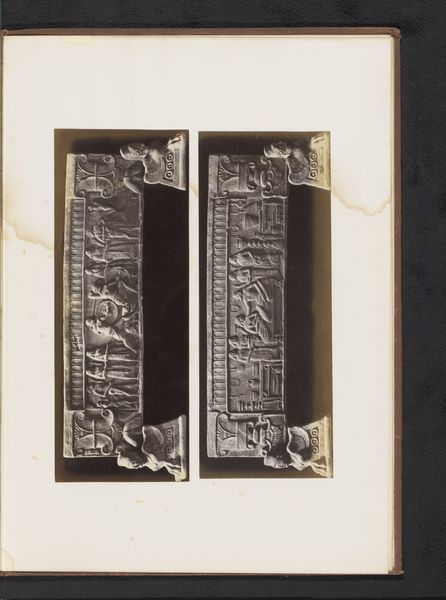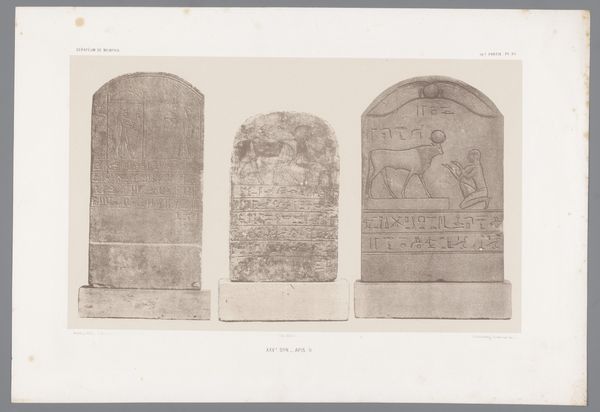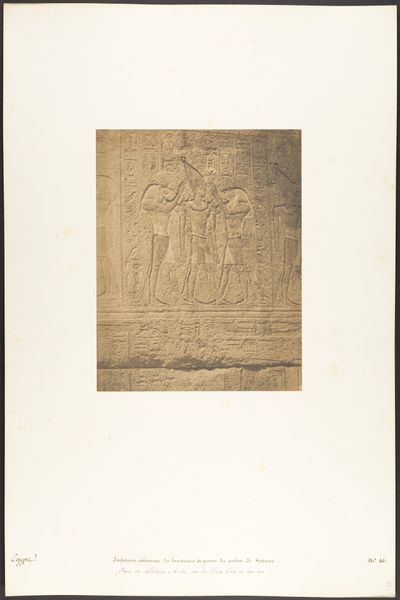
Inscription Démotique; second Pylone du Temple d'Isis, à Philae 1850
0:00
0:00
photography, gelatin-silver-print, architecture
#
landscape
#
ancient-egyptian-art
#
photography
#
ancient-mediterranean
#
arch
#
gelatin-silver-print
#
history-painting
#
architecture
Dimensions: Image: 6 1/4 × 9 1/8 in. (15.8 × 23.2 cm) Mount: 12 5/16 × 18 11/16 in. (31.2 × 47.5 cm)
Copyright: Public Domain
Curator: This gelatin silver print, titled "Inscription Démotique; second Pylone du Temple d'Isis, à Philae", was captured in 1850 by Maxime Du Camp. It is an interesting architectural study. Editor: The monochrome tonality, bordering on sepia, immediately creates a sense of antiquity, and frankly, a melancholy mood. The image presents as a fractured, yet stoic face to time's relentless march. Curator: Indeed, observe the composition—the photograph isolates a segment of the pylone, focusing attention on the surface. The careful framing and lighting underscore the materiality of the stone and the incised inscription. Notice how the photographer plays with light and shadow to articulate the texture and form, using tonality to subtly flatten depth, reinforcing the planarity of the photographic surface. Editor: Beyond the stone itself, the inscriptions bear a profound weight. The demotic script represents the evolution of Egyptian hieroglyphs, becoming the everyday script. It's a democratization of the sacred, suggesting a shift in access to knowledge and power, echoing throughout cultural memory. We should also note that the temple's dedication to Isis links it directly to themes of life, magic, and motherhood that carry across cultures and millennia. Curator: Quite right. The structural integrity of the whole image relies upon these patterns and variations of texture—the varying planes and shadows, the visual rhythms in the cut stone. The inscription isn’t merely text but also an element of graphic design, creating contrasts and a certain kind of density that plays into the picture plane. Editor: Yes, and the fragmentation also contributes to that density – the inscription appears disrupted but it conveys perseverance; these remnants testify to resilience through centuries. We could consider this work through the lens of memory – how the fragmented echoes within evoke collective remembrance across multiple cultures through archetypal symbols such as divine wisdom. Curator: Examining the photograph formally allows for a certain perspective, no doubt, and yet the dialogue opened by your reflections on those very symbolic fragments suggests broader consideration. Thank you. Editor: And you've given us a new way to look at this old memory, framed as art.
Comments
No comments
Be the first to comment and join the conversation on the ultimate creative platform.
